-
EXECUTIVE SUMMARY
-
Market Overview
-
Key Findings
-
Market Segmentation
-
Competitive Landscape
-
Challenges and Opportunities
-
Future Outlook
-
MARKET INTRODUCTION
-
Definition
-
Scope of the study
- Research Objective
- Limitations
-
Assumption
-
RESEARCH METHODOLOGY
-
Overview
-
Data Mining
-
Secondary Research
- Primary Interviews and
- Breakdown
-
Primary Research
-
Information Gathering Process
-
of Primary Respondents
-
Forecasting Model
-
Market Size Estimation
- Top-Down Approach
-
Bottom-Up Approach
-
Data Triangulation
-
Validation
-
MARKET DYNAMICS
-
Overview
-
Drivers
-
Restraints
-
Opportunities
-
MARKET FACTOR ANALYSIS
-
Value chain Analysis
- Bargaining
- Bargaining Power of Buyers
- Threat of New Entrants
- Threat of Substitutes
-
Porter's Five Forces Analysis
-
Power of Suppliers
-
Intensity of Rivalry
-
COVID-19 Impact Analysis
- Market Impact Analysis
- Regional Impact
-
Opportunity and Threat Analysis
-
TOBACCO
-
PRODUCTS MARKET, BY PRODUCT TYPE (USD BILLION)
-
Cigarettes
-
Cigars
-
Chewing Tobacco
-
Snuff
-
TOBACCO PRODUCTS MARKET, BY
-
CONSUMPTION METHOD (USD BILLION)
-
Flavored
-
Non-Flavored
-
Roll-Your-Own
-
TOBACCO
-
PRODUCTS MARKET, BY DISTRIBUTION CHANNEL (USD BILLION)
-
Retail Stores
-
Online Stores
-
Supermarkets
-
TOBACCO
-
PRODUCTS MARKET, BY DEMOGRAPHIC (USD BILLION)
-
Age
-
Gender
-
Income Level
-
TOBACCO
-
PRODUCTS MARKET, BY REGIONAL (USD BILLION)
-
North America
-
UK
-
Russia
-
Rest of Europe
-
India
-
Malaysia
-
Rest of APAC
-
Mexico
-
MEA
-
Rest of MEA
-
US
-
Canada
-
Europe
- Germany
- France
- Italy
- Spain
-
APAC
- China
- Japan
- South Korea
- Thailand
- Indonesia
-
South America
- Brazil
- Argentina
- Rest of South America
- GCC Countries
- South Africa
-
COMPETITIVE LANDSCAPE
-
Overview
-
Competitive
-
Analysis
-
Market share Analysis
-
Major Growth Strategy in the Tobacco Products Market
-
Competitive Benchmarking
-
Leading Players in Terms of Number of Developments in
-
the Tobacco Products Market
-
Key
-
developments and growth strategies
-
New Product Launch/Service Deployment
-
Merger & Acquisitions
-
Joint Ventures
-
Major Players Financial
- Sales and Operating Income
- Major Players R&D Expenditure.
-
Matrix
-
COMPANY PROFILES
-
China National Tobacco Corporation
- Financial Overview
- Key Developments
- SWOT Analysis
-
Products Offered
-
Key Strategies
-
Kraft Heinz
- Financial Overview
- Key Developments
- SWOT Analysis
-
Products Offered
-
Key Strategies
-
Sampoerna
- Financial Overview
- Key Developments
- SWOT Analysis
-
Products Offered
-
Key Strategies
-
Japan Tobacco International
- Financial Overview
- Products Offered
- SWOT Analysis
- Key Strategies
- Products Offered
- Key Developments
- Key Strategies
-
Key Developments
-
Fujian Province Tobacco Company
-
Financial Overview
-
SWOT Analysis
-
0050
- Products Offered
- Key Developments
- Key Strategies
-
Financial Overview
-
SWOT Analysis
-
Philip Morris International
- Products Offered
- Key Developments
- Key Strategies
-
Financial Overview
-
SWOT Analysis
-
British American Tobacco
- Products Offered
- Key Developments
- Key Strategies
-
Financial Overview
-
SWOT Analysis
-
PT Gudang Garam Tbk
- Products Offered
- Key Developments
- Key Strategies
-
Financial Overview
-
SWOT Analysis
-
Imperial Brands
- Products Offered
- Key Developments
- Key Strategies
-
Financial Overview
-
SWOT Analysis
-
Altria Group
- Products Offered
- Key Developments
- Key Strategies
-
Financial Overview
-
SWOT Analysis
-
Swedish Match
- Products Offered
- Key Developments
- Key Strategies
-
Financial Overview
-
SWOT Analysis
-
ITC Limited
- Products Offered
- Key Developments
- Key Strategies
-
Financial Overview
-
SWOT Analysis
-
Reynolds American
- Products Offered
- Key Developments
- Key Strategies
-
Financial Overview
-
SWOT Analysis
-
APPENDIX
-
References
-
Related Reports
-
LIST OF TABLES
-
TABLE 1.
-
LIST OF ASSUMPTIONS
-
NORTH AMERICA TOBACCO
-
PRODUCTS MARKET SIZE ESTIMATES & FORECAST, BY PRODUCT TYPE, 2019-2035 (USD BILLIONS)
-
NORTH AMERICA TOBACCO PRODUCTS
-
MARKET SIZE ESTIMATES & FORECAST, BY CONSUMPTION METHOD, 2019-2035 (USD BILLIONS)
-
NORTH AMERICA TOBACCO PRODUCTS
-
MARKET SIZE ESTIMATES & FORECAST, BY DISTRIBUTION CHANNEL, 2019-2035 (USD BILLIONS)
-
NORTH AMERICA TOBACCO PRODUCTS
-
MARKET SIZE ESTIMATES & FORECAST, BY DEMOGRAPHIC, 2019-2035 (USD BILLIONS)
-
NORTH AMERICA TOBACCO PRODUCTS MARKET SIZE ESTIMATES
-
& FORECAST, BY REGIONAL, 2019-2035 (USD BILLIONS)
-
TABLE
-
US TOBACCO PRODUCTS MARKET SIZE ESTIMATES & FORECAST, BY PRODUCT TYPE, 2019-2035
-
(USD BILLIONS)
-
US TOBACCO PRODUCTS
-
MARKET SIZE ESTIMATES & FORECAST, BY CONSUMPTION METHOD, 2019-2035 (USD BILLIONS)
-
US TOBACCO PRODUCTS MARKET
-
SIZE ESTIMATES & FORECAST, BY DISTRIBUTION CHANNEL, 2019-2035 (USD BILLIONS)
-
US TOBACCO PRODUCTS MARKET
-
SIZE ESTIMATES & FORECAST, BY DEMOGRAPHIC, 2019-2035 (USD BILLIONS)
-
US TOBACCO PRODUCTS MARKET SIZE ESTIMATES & FORECAST,
-
BY REGIONAL, 2019-2035 (USD BILLIONS)
-
TABLE 12.
-
CANADA TOBACCO PRODUCTS MARKET SIZE ESTIMATES & FORECAST, BY PRODUCT TYPE, 2019-2035
-
(USD BILLIONS)
-
CANADA TOBACCO PRODUCTS
-
MARKET SIZE ESTIMATES & FORECAST, BY CONSUMPTION METHOD, 2019-2035 (USD BILLIONS)
-
CANADA TOBACCO PRODUCTS MARKET
-
SIZE ESTIMATES & FORECAST, BY DISTRIBUTION CHANNEL, 2019-2035 (USD BILLIONS)
-
CANADA TOBACCO PRODUCTS MARKET
-
SIZE ESTIMATES & FORECAST, BY DEMOGRAPHIC, 2019-2035 (USD BILLIONS)
-
CANADA TOBACCO PRODUCTS MARKET SIZE ESTIMATES &
-
FORECAST, BY REGIONAL, 2019-2035 (USD BILLIONS)
-
TABLE
-
EUROPE TOBACCO PRODUCTS MARKET SIZE ESTIMATES & FORECAST, BY PRODUCT TYPE,
-
TABLE 18.
-
EUROPE TOBACCO PRODUCTS MARKET SIZE ESTIMATES & FORECAST, BY CONSUMPTION METHOD,
-
TABLE 19.
-
EUROPE TOBACCO PRODUCTS MARKET SIZE ESTIMATES & FORECAST, BY DISTRIBUTION CHANNEL,
-
TABLE 20.
-
EUROPE TOBACCO PRODUCTS MARKET SIZE ESTIMATES & FORECAST, BY DEMOGRAPHIC, 2019-2035
-
(USD BILLIONS)
-
EUROPE TOBACCO PRODUCTS
-
MARKET SIZE ESTIMATES & FORECAST, BY REGIONAL, 2019-2035 (USD BILLIONS)
-
GERMANY TOBACCO PRODUCTS MARKET SIZE ESTIMATES &
-
FORECAST, BY PRODUCT TYPE, 2019-2035 (USD BILLIONS)
-
TABLE
-
GERMANY TOBACCO PRODUCTS MARKET SIZE ESTIMATES & FORECAST, BY CONSUMPTION
-
METHOD, 2019-2035 (USD BILLIONS)
-
TABLE 24.
-
GERMANY TOBACCO PRODUCTS MARKET SIZE ESTIMATES & FORECAST, BY DISTRIBUTION CHANNEL,
-
TABLE 25.
-
GERMANY TOBACCO PRODUCTS MARKET SIZE ESTIMATES & FORECAST, BY DEMOGRAPHIC, 2019-2035
-
(USD BILLIONS)
-
GERMANY TOBACCO PRODUCTS
-
MARKET SIZE ESTIMATES & FORECAST, BY REGIONAL, 2019-2035 (USD BILLIONS)
-
UK TOBACCO PRODUCTS MARKET SIZE ESTIMATES & FORECAST,
-
BY PRODUCT TYPE, 2019-2035 (USD BILLIONS)
-
TABLE
-
UK TOBACCO PRODUCTS MARKET SIZE ESTIMATES & FORECAST, BY CONSUMPTION METHOD,
-
TABLE 29.
-
UK TOBACCO PRODUCTS MARKET SIZE ESTIMATES & FORECAST, BY DISTRIBUTION CHANNEL,
-
TABLE 30.
-
UK TOBACCO PRODUCTS MARKET SIZE ESTIMATES & FORECAST, BY DEMOGRAPHIC, 2019-2035
-
(USD BILLIONS)
-
UK TOBACCO PRODUCTS
-
MARKET SIZE ESTIMATES & FORECAST, BY REGIONAL, 2019-2035 (USD BILLIONS)
-
FRANCE TOBACCO PRODUCTS MARKET SIZE ESTIMATES &
-
FORECAST, BY PRODUCT TYPE, 2019-2035 (USD BILLIONS)
-
TABLE
-
FRANCE TOBACCO PRODUCTS MARKET SIZE ESTIMATES & FORECAST, BY CONSUMPTION
-
METHOD, 2019-2035 (USD BILLIONS)
-
TABLE 34.
-
FRANCE TOBACCO PRODUCTS MARKET SIZE ESTIMATES & FORECAST, BY DISTRIBUTION CHANNEL,
-
TABLE 35.
-
FRANCE TOBACCO PRODUCTS MARKET SIZE ESTIMATES & FORECAST, BY DEMOGRAPHIC, 2019-2035
-
(USD BILLIONS)
-
FRANCE TOBACCO PRODUCTS
-
MARKET SIZE ESTIMATES & FORECAST, BY REGIONAL, 2019-2035 (USD BILLIONS)
-
RUSSIA TOBACCO PRODUCTS MARKET SIZE ESTIMATES &
-
FORECAST, BY PRODUCT TYPE, 2019-2035 (USD BILLIONS)
-
TABLE
-
RUSSIA TOBACCO PRODUCTS MARKET SIZE ESTIMATES & FORECAST, BY CONSUMPTION
-
METHOD, 2019-2035 (USD BILLIONS)
-
TABLE 39.
-
RUSSIA TOBACCO PRODUCTS MARKET SIZE ESTIMATES & FORECAST, BY DISTRIBUTION CHANNEL,
-
TABLE 40.
-
RUSSIA TOBACCO PRODUCTS MARKET SIZE ESTIMATES & FORECAST, BY DEMOGRAPHIC, 2019-2035
-
(USD BILLIONS)
-
RUSSIA TOBACCO PRODUCTS
-
MARKET SIZE ESTIMATES & FORECAST, BY REGIONAL, 2019-2035 (USD BILLIONS)
-
ITALY TOBACCO PRODUCTS MARKET SIZE ESTIMATES &
-
FORECAST, BY PRODUCT TYPE, 2019-2035 (USD BILLIONS)
-
TABLE
-
ITALY TOBACCO PRODUCTS MARKET SIZE ESTIMATES & FORECAST, BY CONSUMPTION
-
METHOD, 2019-2035 (USD BILLIONS)
-
TABLE 44.
-
ITALY TOBACCO PRODUCTS MARKET SIZE ESTIMATES & FORECAST, BY DISTRIBUTION CHANNEL,
-
TABLE 45.
-
ITALY TOBACCO PRODUCTS MARKET SIZE ESTIMATES & FORECAST, BY DEMOGRAPHIC, 2019-2035
-
(USD BILLIONS)
-
ITALY TOBACCO PRODUCTS
-
MARKET SIZE ESTIMATES & FORECAST, BY REGIONAL, 2019-2035 (USD BILLIONS)
-
SPAIN TOBACCO PRODUCTS MARKET SIZE ESTIMATES &
-
FORECAST, BY PRODUCT TYPE, 2019-2035 (USD BILLIONS)
-
TABLE
-
SPAIN TOBACCO PRODUCTS MARKET SIZE ESTIMATES & FORECAST, BY CONSUMPTION
-
METHOD, 2019-2035 (USD BILLIONS)
-
TABLE 49.
-
SPAIN TOBACCO PRODUCTS MARKET SIZE ESTIMATES & FORECAST, BY DISTRIBUTION CHANNEL,
-
TABLE 50.
-
SPAIN TOBACCO PRODUCTS MARKET SIZE ESTIMATES & FORECAST, BY DEMOGRAPHIC, 2019-2035
-
(USD BILLIONS)
-
SPAIN TOBACCO PRODUCTS
-
MARKET SIZE ESTIMATES & FORECAST, BY REGIONAL, 2019-2035 (USD BILLIONS)
-
REST OF EUROPE TOBACCO PRODUCTS MARKET SIZE ESTIMATES
-
& FORECAST, BY PRODUCT TYPE, 2019-2035 (USD BILLIONS)
-
TABLE
-
REST OF EUROPE TOBACCO PRODUCTS MARKET SIZE ESTIMATES & FORECAST, BY CONSUMPTION
-
METHOD, 2019-2035 (USD BILLIONS)
-
TABLE 54.
-
REST OF EUROPE TOBACCO PRODUCTS MARKET SIZE ESTIMATES & FORECAST, BY DISTRIBUTION
-
CHANNEL, 2019-2035 (USD BILLIONS)
-
TABLE 55.
-
REST OF EUROPE TOBACCO PRODUCTS MARKET SIZE ESTIMATES & FORECAST, BY DEMOGRAPHIC,
-
TABLE 56.
-
REST OF EUROPE TOBACCO PRODUCTS MARKET SIZE ESTIMATES & FORECAST, BY REGIONAL,
-
TABLE 57.
-
APAC TOBACCO PRODUCTS MARKET SIZE ESTIMATES & FORECAST, BY PRODUCT TYPE, 2019-2035
-
(USD BILLIONS)
-
APAC TOBACCO PRODUCTS
-
MARKET SIZE ESTIMATES & FORECAST, BY CONSUMPTION METHOD, 2019-2035 (USD BILLIONS)
-
APAC TOBACCO PRODUCTS MARKET
-
SIZE ESTIMATES & FORECAST, BY DISTRIBUTION CHANNEL, 2019-2035 (USD BILLIONS)
-
APAC TOBACCO PRODUCTS MARKET
-
SIZE ESTIMATES & FORECAST, BY DEMOGRAPHIC, 2019-2035 (USD BILLIONS)
-
APAC TOBACCO PRODUCTS MARKET SIZE ESTIMATES &
-
FORECAST, BY REGIONAL, 2019-2035 (USD BILLIONS)
-
TABLE
-
CHINA TOBACCO PRODUCTS MARKET SIZE ESTIMATES & FORECAST, BY PRODUCT TYPE,
-
TABLE 63.
-
CHINA TOBACCO PRODUCTS MARKET SIZE ESTIMATES & FORECAST, BY CONSUMPTION METHOD,
-
TABLE 64.
-
CHINA TOBACCO PRODUCTS MARKET SIZE ESTIMATES & FORECAST, BY DISTRIBUTION CHANNEL,
-
TABLE 65.
-
CHINA TOBACCO PRODUCTS MARKET SIZE ESTIMATES & FORECAST, BY DEMOGRAPHIC, 2019-2035
-
(USD BILLIONS)
-
CHINA TOBACCO PRODUCTS
-
MARKET SIZE ESTIMATES & FORECAST, BY REGIONAL, 2019-2035 (USD BILLIONS)
-
INDIA TOBACCO PRODUCTS MARKET SIZE ESTIMATES &
-
FORECAST, BY PRODUCT TYPE, 2019-2035 (USD BILLIONS)
-
TABLE
-
INDIA TOBACCO PRODUCTS MARKET SIZE ESTIMATES & FORECAST, BY CONSUMPTION
-
METHOD, 2019-2035 (USD BILLIONS)
-
TABLE 69.
-
INDIA TOBACCO PRODUCTS MARKET SIZE ESTIMATES & FORECAST, BY DISTRIBUTION CHANNEL,
-
TABLE 70.
-
INDIA TOBACCO PRODUCTS MARKET SIZE ESTIMATES & FORECAST, BY DEMOGRAPHIC, 2019-2035
-
(USD BILLIONS)
-
INDIA TOBACCO PRODUCTS
-
MARKET SIZE ESTIMATES & FORECAST, BY REGIONAL, 2019-2035 (USD BILLIONS)
-
JAPAN TOBACCO PRODUCTS MARKET SIZE ESTIMATES &
-
FORECAST, BY PRODUCT TYPE, 2019-2035 (USD BILLIONS)
-
TABLE
-
JAPAN TOBACCO PRODUCTS MARKET SIZE ESTIMATES & FORECAST, BY CONSUMPTION
-
METHOD, 2019-2035 (USD BILLIONS)
-
TABLE 74.
-
JAPAN TOBACCO PRODUCTS MARKET SIZE ESTIMATES & FORECAST, BY DISTRIBUTION CHANNEL,
-
TABLE 75.
-
JAPAN TOBACCO PRODUCTS MARKET SIZE ESTIMATES & FORECAST, BY DEMOGRAPHIC, 2019-2035
-
(USD BILLIONS)
-
JAPAN TOBACCO PRODUCTS
-
MARKET SIZE ESTIMATES & FORECAST, BY REGIONAL, 2019-2035 (USD BILLIONS)
-
SOUTH KOREA TOBACCO PRODUCTS MARKET SIZE ESTIMATES
-
& FORECAST, BY PRODUCT TYPE, 2019-2035 (USD BILLIONS)
-
TABLE
-
SOUTH KOREA TOBACCO PRODUCTS MARKET SIZE ESTIMATES & FORECAST, BY CONSUMPTION
-
METHOD, 2019-2035 (USD BILLIONS)
-
TABLE 79.
-
SOUTH KOREA TOBACCO PRODUCTS MARKET SIZE ESTIMATES & FORECAST, BY DISTRIBUTION
-
CHANNEL, 2019-2035 (USD BILLIONS)
-
TABLE 80.
-
SOUTH KOREA TOBACCO PRODUCTS MARKET SIZE ESTIMATES & FORECAST, BY DEMOGRAPHIC,
-
TABLE 81.
-
SOUTH KOREA TOBACCO PRODUCTS MARKET SIZE ESTIMATES & FORECAST, BY REGIONAL,
-
TABLE 82.
-
MALAYSIA TOBACCO PRODUCTS MARKET SIZE ESTIMATES & FORECAST, BY PRODUCT TYPE,
-
TABLE 83.
-
MALAYSIA TOBACCO PRODUCTS MARKET SIZE ESTIMATES & FORECAST, BY CONSUMPTION METHOD,
-
TABLE 84.
-
MALAYSIA TOBACCO PRODUCTS MARKET SIZE ESTIMATES & FORECAST, BY DISTRIBUTION
-
CHANNEL, 2019-2035 (USD BILLIONS)
-
TABLE 85.
-
MALAYSIA TOBACCO PRODUCTS MARKET SIZE ESTIMATES & FORECAST, BY DEMOGRAPHIC,
-
TABLE 86.
-
MALAYSIA TOBACCO PRODUCTS MARKET SIZE ESTIMATES & FORECAST, BY REGIONAL, 2019-2035
-
(USD BILLIONS)
-
THAILAND TOBACCO PRODUCTS
-
MARKET SIZE ESTIMATES & FORECAST, BY PRODUCT TYPE, 2019-2035 (USD BILLIONS)
-
THAILAND TOBACCO PRODUCTS
-
MARKET SIZE ESTIMATES & FORECAST, BY CONSUMPTION METHOD, 2019-2035 (USD BILLIONS)
-
THAILAND TOBACCO PRODUCTS
-
MARKET SIZE ESTIMATES & FORECAST, BY DISTRIBUTION CHANNEL, 2019-2035 (USD BILLIONS)
-
THAILAND TOBACCO PRODUCTS
-
MARKET SIZE ESTIMATES & FORECAST, BY DEMOGRAPHIC, 2019-2035 (USD BILLIONS)
-
THAILAND TOBACCO PRODUCTS MARKET SIZE ESTIMATES &
-
FORECAST, BY REGIONAL, 2019-2035 (USD BILLIONS)
-
TABLE
-
INDONESIA TOBACCO PRODUCTS MARKET SIZE ESTIMATES & FORECAST, BY PRODUCT
-
TYPE, 2019-2035 (USD BILLIONS)
-
TABLE 93.
-
INDONESIA TOBACCO PRODUCTS MARKET SIZE ESTIMATES & FORECAST, BY CONSUMPTION
-
METHOD, 2019-2035 (USD BILLIONS)
-
TABLE 94.
-
INDONESIA TOBACCO PRODUCTS MARKET SIZE ESTIMATES & FORECAST, BY DISTRIBUTION
-
CHANNEL, 2019-2035 (USD BILLIONS)
-
TABLE 95.
-
INDONESIA TOBACCO PRODUCTS MARKET SIZE ESTIMATES & FORECAST, BY DEMOGRAPHIC,
-
TABLE 96.
-
INDONESIA TOBACCO PRODUCTS MARKET SIZE ESTIMATES & FORECAST, BY REGIONAL, 2019-2035
-
(USD BILLIONS)
-
REST OF APAC TOBACCO
-
PRODUCTS MARKET SIZE ESTIMATES & FORECAST, BY PRODUCT TYPE, 2019-2035 (USD BILLIONS)
-
REST OF APAC TOBACCO PRODUCTS
-
MARKET SIZE ESTIMATES & FORECAST, BY CONSUMPTION METHOD, 2019-2035 (USD BILLIONS)
-
REST OF APAC TOBACCO PRODUCTS
-
MARKET SIZE ESTIMATES & FORECAST, BY DISTRIBUTION CHANNEL, 2019-2035 (USD BILLIONS)
-
REST OF APAC TOBACCO PRODUCTS
-
MARKET SIZE ESTIMATES & FORECAST, BY DEMOGRAPHIC, 2019-2035 (USD BILLIONS)
-
REST OF APAC TOBACCO PRODUCTS MARKET SIZE ESTIMATES
-
& FORECAST, BY REGIONAL, 2019-2035 (USD BILLIONS)
-
TABLE
-
SOUTH AMERICA TOBACCO PRODUCTS MARKET SIZE ESTIMATES & FORECAST, BY PRODUCT
-
TYPE, 2019-2035 (USD BILLIONS)
-
TABLE 103.
-
SOUTH AMERICA TOBACCO PRODUCTS MARKET SIZE ESTIMATES & FORECAST, BY CONSUMPTION
-
METHOD, 2019-2035 (USD BILLIONS)
-
TABLE 104.
-
SOUTH AMERICA TOBACCO PRODUCTS MARKET SIZE ESTIMATES & FORECAST, BY DISTRIBUTION
-
CHANNEL, 2019-2035 (USD BILLIONS)
-
TABLE 105.
-
SOUTH AMERICA TOBACCO PRODUCTS MARKET SIZE ESTIMATES & FORECAST, BY DEMOGRAPHIC,
-
TABLE 106.
-
SOUTH AMERICA TOBACCO PRODUCTS MARKET SIZE ESTIMATES & FORECAST, BY REGIONAL,
-
TABLE 107.
-
BRAZIL TOBACCO PRODUCTS MARKET SIZE ESTIMATES & FORECAST, BY PRODUCT TYPE, 2019-2035
-
(USD BILLIONS)
-
BRAZIL TOBACCO PRODUCTS
-
MARKET SIZE ESTIMATES & FORECAST, BY CONSUMPTION METHOD, 2019-2035 (USD BILLIONS)
-
BRAZIL TOBACCO PRODUCTS MARKET
-
SIZE ESTIMATES & FORECAST, BY DISTRIBUTION CHANNEL, 2019-2035 (USD BILLIONS)
-
BRAZIL TOBACCO PRODUCTS MARKET
-
SIZE ESTIMATES & FORECAST, BY DEMOGRAPHIC, 2019-2035 (USD BILLIONS)
-
BRAZIL TOBACCO PRODUCTS MARKET SIZE ESTIMATES &
-
FORECAST, BY REGIONAL, 2019-2035 (USD BILLIONS)
-
TABLE
-
MEXICO TOBACCO PRODUCTS MARKET SIZE ESTIMATES & FORECAST, BY PRODUCT TYPE,
-
TABLE 113.
-
MEXICO TOBACCO PRODUCTS MARKET SIZE ESTIMATES & FORECAST, BY CONSUMPTION METHOD,
-
TABLE 114.
-
MEXICO TOBACCO PRODUCTS MARKET SIZE ESTIMATES & FORECAST, BY DISTRIBUTION CHANNEL,
-
TABLE 115.
-
MEXICO TOBACCO PRODUCTS MARKET SIZE ESTIMATES & FORECAST, BY DEMOGRAPHIC, 2019-2035
-
(USD BILLIONS)
-
MEXICO TOBACCO PRODUCTS
-
MARKET SIZE ESTIMATES & FORECAST, BY REGIONAL, 2019-2035 (USD BILLIONS)
-
ARGENTINA TOBACCO PRODUCTS MARKET SIZE ESTIMATES
-
& FORECAST, BY PRODUCT TYPE, 2019-2035 (USD BILLIONS)
-
TABLE
-
ARGENTINA TOBACCO PRODUCTS MARKET SIZE ESTIMATES & FORECAST, BY CONSUMPTION
-
METHOD, 2019-2035 (USD BILLIONS)
-
TABLE 119.
-
ARGENTINA TOBACCO PRODUCTS MARKET SIZE ESTIMATES & FORECAST, BY DISTRIBUTION
-
CHANNEL, 2019-2035 (USD BILLIONS)
-
TABLE 120.
-
ARGENTINA TOBACCO PRODUCTS MARKET SIZE ESTIMATES & FORECAST, BY DEMOGRAPHIC,
-
TABLE 121.
-
ARGENTINA TOBACCO PRODUCTS MARKET SIZE ESTIMATES & FORECAST, BY REGIONAL, 2019-2035
-
(USD BILLIONS)
-
REST OF SOUTH AMERICA
-
TOBACCO PRODUCTS MARKET SIZE ESTIMATES & FORECAST, BY PRODUCT TYPE, 2019-2035
-
(USD BILLIONS)
-
REST OF SOUTH AMERICA
-
TOBACCO PRODUCTS MARKET SIZE ESTIMATES & FORECAST, BY CONSUMPTION METHOD, 2019-2035
-
(USD BILLIONS)
-
REST OF SOUTH AMERICA
-
TOBACCO PRODUCTS MARKET SIZE ESTIMATES & FORECAST, BY DISTRIBUTION CHANNEL,
-
TABLE 125.
-
REST OF SOUTH AMERICA TOBACCO PRODUCTS MARKET SIZE ESTIMATES & FORECAST, BY
-
DEMOGRAPHIC, 2019-2035 (USD BILLIONS)
-
TABLE 126.
-
REST OF SOUTH AMERICA TOBACCO PRODUCTS MARKET SIZE ESTIMATES & FORECAST, BY
-
REGIONAL, 2019-2035 (USD BILLIONS)
-
TABLE 127.
-
MEA TOBACCO PRODUCTS MARKET SIZE ESTIMATES & FORECAST, BY PRODUCT TYPE, 2019-2035
-
(USD BILLIONS)
-
MEA TOBACCO PRODUCTS
-
MARKET SIZE ESTIMATES & FORECAST, BY CONSUMPTION METHOD, 2019-2035 (USD BILLIONS)
-
MEA TOBACCO PRODUCTS MARKET
-
SIZE ESTIMATES & FORECAST, BY DISTRIBUTION CHANNEL, 2019-2035 (USD BILLIONS)
-
MEA TOBACCO PRODUCTS MARKET
-
SIZE ESTIMATES & FORECAST, BY DEMOGRAPHIC, 2019-2035 (USD BILLIONS)
-
MEA TOBACCO PRODUCTS MARKET SIZE ESTIMATES &
-
FORECAST, BY REGIONAL, 2019-2035 (USD BILLIONS)
-
TABLE
-
GCC COUNTRIES TOBACCO PRODUCTS MARKET SIZE ESTIMATES & FORECAST, BY PRODUCT
-
TYPE, 2019-2035 (USD BILLIONS)
-
TABLE 133.
-
GCC COUNTRIES TOBACCO PRODUCTS MARKET SIZE ESTIMATES & FORECAST, BY CONSUMPTION
-
METHOD, 2019-2035 (USD BILLIONS)
-
TABLE 134.
-
GCC COUNTRIES TOBACCO PRODUCTS MARKET SIZE ESTIMATES & FORECAST, BY DISTRIBUTION
-
CHANNEL, 2019-2035 (USD BILLIONS)
-
TABLE 135.
-
GCC COUNTRIES TOBACCO PRODUCTS MARKET SIZE ESTIMATES & FORECAST, BY DEMOGRAPHIC,
-
TABLE 136.
-
GCC COUNTRIES TOBACCO PRODUCTS MARKET SIZE ESTIMATES & FORECAST, BY REGIONAL,
-
TABLE 137.
-
SOUTH AFRICA TOBACCO PRODUCTS MARKET SIZE ESTIMATES & FORECAST, BY PRODUCT TYPE,
-
TABLE 138.
-
SOUTH AFRICA TOBACCO PRODUCTS MARKET SIZE ESTIMATES & FORECAST, BY CONSUMPTION
-
METHOD, 2019-2035 (USD BILLIONS)
-
TABLE 139.
-
SOUTH AFRICA TOBACCO PRODUCTS MARKET SIZE ESTIMATES & FORECAST, BY DISTRIBUTION
-
CHANNEL, 2019-2035 (USD BILLIONS)
-
TABLE 140.
-
SOUTH AFRICA TOBACCO PRODUCTS MARKET SIZE ESTIMATES & FORECAST, BY DEMOGRAPHIC,
-
TABLE 141.
-
SOUTH AFRICA TOBACCO PRODUCTS MARKET SIZE ESTIMATES & FORECAST, BY REGIONAL,
-
TABLE 142.
-
REST OF MEA TOBACCO PRODUCTS MARKET SIZE ESTIMATES & FORECAST, BY PRODUCT TYPE,
-
TABLE 143.
-
REST OF MEA TOBACCO PRODUCTS MARKET SIZE ESTIMATES & FORECAST, BY CONSUMPTION
-
METHOD, 2019-2035 (USD BILLIONS)
-
TABLE 144.
-
REST OF MEA TOBACCO PRODUCTS MARKET SIZE ESTIMATES & FORECAST, BY DISTRIBUTION
-
CHANNEL, 2019-2035 (USD BILLIONS)
-
TABLE 145.
-
REST OF MEA TOBACCO PRODUCTS MARKET SIZE ESTIMATES & FORECAST, BY DEMOGRAPHIC,
-
TABLE 146.
-
REST OF MEA TOBACCO PRODUCTS MARKET SIZE ESTIMATES & FORECAST, BY REGIONAL,
-
TABLE 147.
-
PRODUCT LAUNCH/PRODUCT DEVELOPMENT/APPROVAL
-
TABLE
-
ACQUISITION/PARTNERSHIP
-
LIST OF
-
FIGURES
-
MARKET SYNOPSIS
-
NORTH AMERICA TOBACCO PRODUCTS MARKET ANALYSIS
-
US TOBACCO PRODUCTS MARKET ANALYSIS BY PRODUCT TYPE
-
US TOBACCO PRODUCTS MARKET
-
ANALYSIS BY CONSUMPTION METHOD
-
FIGURE 5.
-
US TOBACCO PRODUCTS MARKET ANALYSIS BY DISTRIBUTION CHANNEL
-
FIGURE
-
US TOBACCO PRODUCTS MARKET ANALYSIS BY DEMOGRAPHIC
-
FIGURE
-
US TOBACCO PRODUCTS MARKET ANALYSIS BY REGIONAL
-
FIGURE
-
CANADA TOBACCO PRODUCTS MARKET ANALYSIS BY PRODUCT TYPE
-
FIGURE
-
CANADA TOBACCO PRODUCTS MARKET ANALYSIS BY CONSUMPTION METHOD
-
CANADA TOBACCO PRODUCTS MARKET ANALYSIS BY DISTRIBUTION
-
CHANNEL
-
CANADA TOBACCO PRODUCTS
-
MARKET ANALYSIS BY DEMOGRAPHIC
-
FIGURE 12.
-
CANADA TOBACCO PRODUCTS MARKET ANALYSIS BY REGIONAL
-
FIGURE
-
EUROPE TOBACCO PRODUCTS MARKET ANALYSIS
-
FIGURE
-
GERMANY TOBACCO PRODUCTS MARKET ANALYSIS BY PRODUCT TYPE
-
FIGURE
-
GERMANY TOBACCO PRODUCTS MARKET ANALYSIS BY CONSUMPTION METHOD
-
GERMANY TOBACCO PRODUCTS MARKET ANALYSIS BY DISTRIBUTION
-
CHANNEL
-
GERMANY TOBACCO PRODUCTS
-
MARKET ANALYSIS BY DEMOGRAPHIC
-
FIGURE 18.
-
GERMANY TOBACCO PRODUCTS MARKET ANALYSIS BY REGIONAL
-
FIGURE
-
UK TOBACCO PRODUCTS MARKET ANALYSIS BY PRODUCT TYPE
-
FIGURE
-
UK TOBACCO PRODUCTS MARKET ANALYSIS BY CONSUMPTION METHOD
-
UK TOBACCO PRODUCTS MARKET ANALYSIS BY DISTRIBUTION
-
CHANNEL
-
UK TOBACCO PRODUCTS
-
MARKET ANALYSIS BY DEMOGRAPHIC
-
FIGURE 23.
-
UK TOBACCO PRODUCTS MARKET ANALYSIS BY REGIONAL
-
FIGURE
-
FRANCE TOBACCO PRODUCTS MARKET ANALYSIS BY PRODUCT TYPE
-
FIGURE
-
FRANCE TOBACCO PRODUCTS MARKET ANALYSIS BY CONSUMPTION METHOD
-
FRANCE TOBACCO PRODUCTS MARKET ANALYSIS BY DISTRIBUTION
-
CHANNEL
-
FRANCE TOBACCO PRODUCTS
-
MARKET ANALYSIS BY DEMOGRAPHIC
-
FIGURE 28.
-
FRANCE TOBACCO PRODUCTS MARKET ANALYSIS BY REGIONAL
-
FIGURE
-
RUSSIA TOBACCO PRODUCTS MARKET ANALYSIS BY PRODUCT TYPE
-
FIGURE
-
RUSSIA TOBACCO PRODUCTS MARKET ANALYSIS BY CONSUMPTION METHOD
-
RUSSIA TOBACCO PRODUCTS MARKET ANALYSIS BY DISTRIBUTION
-
CHANNEL
-
RUSSIA TOBACCO PRODUCTS
-
MARKET ANALYSIS BY DEMOGRAPHIC
-
FIGURE 33.
-
RUSSIA TOBACCO PRODUCTS MARKET ANALYSIS BY REGIONAL
-
FIGURE
-
ITALY TOBACCO PRODUCTS MARKET ANALYSIS BY PRODUCT TYPE
-
FIGURE
-
ITALY TOBACCO PRODUCTS MARKET ANALYSIS BY CONSUMPTION METHOD
-
ITALY TOBACCO PRODUCTS MARKET ANALYSIS BY DISTRIBUTION
-
CHANNEL
-
ITALY TOBACCO PRODUCTS
-
MARKET ANALYSIS BY DEMOGRAPHIC
-
FIGURE 38.
-
ITALY TOBACCO PRODUCTS MARKET ANALYSIS BY REGIONAL
-
FIGURE
-
SPAIN TOBACCO PRODUCTS MARKET ANALYSIS BY PRODUCT TYPE
-
FIGURE
-
SPAIN TOBACCO PRODUCTS MARKET ANALYSIS BY CONSUMPTION METHOD
-
SPAIN TOBACCO PRODUCTS MARKET ANALYSIS BY DISTRIBUTION
-
CHANNEL
-
SPAIN TOBACCO PRODUCTS
-
MARKET ANALYSIS BY DEMOGRAPHIC
-
FIGURE 43.
-
SPAIN TOBACCO PRODUCTS MARKET ANALYSIS BY REGIONAL
-
FIGURE
-
REST OF EUROPE TOBACCO PRODUCTS MARKET ANALYSIS BY PRODUCT TYPE
-
REST OF EUROPE TOBACCO PRODUCTS MARKET ANALYSIS
-
BY CONSUMPTION METHOD
-
REST OF EUROPE TOBACCO
-
PRODUCTS MARKET ANALYSIS BY DISTRIBUTION CHANNEL
-
FIGURE
-
REST OF EUROPE TOBACCO PRODUCTS MARKET ANALYSIS BY DEMOGRAPHIC
-
REST OF EUROPE TOBACCO PRODUCTS MARKET ANALYSIS
-
BY REGIONAL
-
APAC TOBACCO PRODUCTS
-
MARKET ANALYSIS
-
CHINA TOBACCO PRODUCTS
-
MARKET ANALYSIS BY PRODUCT TYPE
-
FIGURE 51.
-
CHINA TOBACCO PRODUCTS MARKET ANALYSIS BY CONSUMPTION METHOD
-
FIGURE
-
CHINA TOBACCO PRODUCTS MARKET ANALYSIS BY DISTRIBUTION CHANNEL
-
CHINA TOBACCO PRODUCTS MARKET ANALYSIS BY DEMOGRAPHIC
-
CHINA TOBACCO PRODUCTS MARKET
-
ANALYSIS BY REGIONAL
-
INDIA TOBACCO PRODUCTS
-
MARKET ANALYSIS BY PRODUCT TYPE
-
FIGURE 56.
-
INDIA TOBACCO PRODUCTS MARKET ANALYSIS BY CONSUMPTION METHOD
-
FIGURE
-
INDIA TOBACCO PRODUCTS MARKET ANALYSIS BY DISTRIBUTION CHANNEL
-
INDIA TOBACCO PRODUCTS MARKET ANALYSIS BY DEMOGRAPHIC
-
INDIA TOBACCO PRODUCTS MARKET
-
ANALYSIS BY REGIONAL
-
JAPAN TOBACCO PRODUCTS
-
MARKET ANALYSIS BY PRODUCT TYPE
-
FIGURE 61.
-
JAPAN TOBACCO PRODUCTS MARKET ANALYSIS BY CONSUMPTION METHOD
-
FIGURE
-
JAPAN TOBACCO PRODUCTS MARKET ANALYSIS BY DISTRIBUTION CHANNEL
-
JAPAN TOBACCO PRODUCTS MARKET ANALYSIS BY DEMOGRAPHIC
-
JAPAN TOBACCO PRODUCTS MARKET
-
ANALYSIS BY REGIONAL
-
SOUTH KOREA TOBACCO
-
PRODUCTS MARKET ANALYSIS BY PRODUCT TYPE
-
FIGURE 66.
-
SOUTH KOREA TOBACCO PRODUCTS MARKET ANALYSIS BY CONSUMPTION METHOD
-
SOUTH KOREA TOBACCO PRODUCTS MARKET ANALYSIS BY
-
DISTRIBUTION CHANNEL
-
SOUTH KOREA TOBACCO
-
PRODUCTS MARKET ANALYSIS BY DEMOGRAPHIC
-
FIGURE 69.
-
SOUTH KOREA TOBACCO PRODUCTS MARKET ANALYSIS BY REGIONAL
-
FIGURE
-
MALAYSIA TOBACCO PRODUCTS MARKET ANALYSIS BY PRODUCT TYPE
-
MALAYSIA TOBACCO PRODUCTS MARKET ANALYSIS BY CONSUMPTION
-
METHOD
-
MALAYSIA TOBACCO PRODUCTS
-
MARKET ANALYSIS BY DISTRIBUTION CHANNEL
-
FIGURE 73.
-
MALAYSIA TOBACCO PRODUCTS MARKET ANALYSIS BY DEMOGRAPHIC
-
FIGURE
-
MALAYSIA TOBACCO PRODUCTS MARKET ANALYSIS BY REGIONAL
-
FIGURE
-
THAILAND TOBACCO PRODUCTS MARKET ANALYSIS BY PRODUCT TYPE
-
THAILAND TOBACCO PRODUCTS MARKET ANALYSIS BY CONSUMPTION
-
METHOD
-
THAILAND TOBACCO PRODUCTS
-
MARKET ANALYSIS BY DISTRIBUTION CHANNEL
-
FIGURE 78.
-
THAILAND TOBACCO PRODUCTS MARKET ANALYSIS BY DEMOGRAPHIC
-
FIGURE
-
THAILAND TOBACCO PRODUCTS MARKET ANALYSIS BY REGIONAL
-
FIGURE
-
INDONESIA TOBACCO PRODUCTS MARKET ANALYSIS BY PRODUCT TYPE
-
INDONESIA TOBACCO PRODUCTS MARKET ANALYSIS BY CONSUMPTION
-
METHOD
-
INDONESIA TOBACCO
-
PRODUCTS MARKET ANALYSIS BY DISTRIBUTION CHANNEL
-
FIGURE
-
INDONESIA TOBACCO PRODUCTS MARKET ANALYSIS BY DEMOGRAPHIC
-
INDONESIA TOBACCO PRODUCTS MARKET ANALYSIS BY REGIONAL
-
REST OF APAC TOBACCO PRODUCTS
-
MARKET ANALYSIS BY PRODUCT TYPE
-
FIGURE 86.
-
REST OF APAC TOBACCO PRODUCTS MARKET ANALYSIS BY CONSUMPTION METHOD
-
REST OF APAC TOBACCO PRODUCTS MARKET ANALYSIS BY
-
DISTRIBUTION CHANNEL
-
REST OF APAC TOBACCO
-
PRODUCTS MARKET ANALYSIS BY DEMOGRAPHIC
-
FIGURE 89.
-
REST OF APAC TOBACCO PRODUCTS MARKET ANALYSIS BY REGIONAL
-
FIGURE
-
SOUTH AMERICA TOBACCO PRODUCTS MARKET ANALYSIS
-
FIGURE
-
BRAZIL TOBACCO PRODUCTS MARKET ANALYSIS BY PRODUCT TYPE
-
FIGURE
-
BRAZIL TOBACCO PRODUCTS MARKET ANALYSIS BY CONSUMPTION METHOD
-
BRAZIL TOBACCO PRODUCTS MARKET ANALYSIS BY DISTRIBUTION
-
CHANNEL
-
BRAZIL TOBACCO PRODUCTS
-
MARKET ANALYSIS BY DEMOGRAPHIC
-
FIGURE 95.
-
BRAZIL TOBACCO PRODUCTS MARKET ANALYSIS BY REGIONAL
-
FIGURE
-
MEXICO TOBACCO PRODUCTS MARKET ANALYSIS BY PRODUCT TYPE
-
FIGURE
-
MEXICO TOBACCO PRODUCTS MARKET ANALYSIS BY CONSUMPTION METHOD
-
MEXICO TOBACCO PRODUCTS MARKET ANALYSIS BY DISTRIBUTION
-
CHANNEL
-
MEXICO TOBACCO PRODUCTS
-
MARKET ANALYSIS BY DEMOGRAPHIC
-
FIGURE 100.
-
MEXICO TOBACCO PRODUCTS MARKET ANALYSIS BY REGIONAL
-
FIGURE
-
ARGENTINA TOBACCO PRODUCTS MARKET ANALYSIS BY PRODUCT TYPE
-
ARGENTINA TOBACCO PRODUCTS MARKET ANALYSIS BY CONSUMPTION
-
METHOD
-
ARGENTINA TOBACCO
-
PRODUCTS MARKET ANALYSIS BY DISTRIBUTION CHANNEL
-
FIGURE
-
ARGENTINA TOBACCO PRODUCTS MARKET ANALYSIS BY DEMOGRAPHIC
-
ARGENTINA TOBACCO PRODUCTS MARKET ANALYSIS BY REGIONAL
-
REST OF SOUTH AMERICA TOBACCO
-
PRODUCTS MARKET ANALYSIS BY PRODUCT TYPE
-
FIGURE 107.
-
REST OF SOUTH AMERICA TOBACCO PRODUCTS MARKET ANALYSIS BY CONSUMPTION METHOD
-
REST OF SOUTH AMERICA TOBACCO PRODUCTS MARKET ANALYSIS
-
BY DISTRIBUTION CHANNEL
-
REST OF SOUTH AMERICA
-
TOBACCO PRODUCTS MARKET ANALYSIS BY DEMOGRAPHIC
-
FIGURE
-
REST OF SOUTH AMERICA TOBACCO PRODUCTS MARKET ANALYSIS BY REGIONAL
-
MEA TOBACCO PRODUCTS MARKET ANALYSIS
-
GCC COUNTRIES TOBACCO PRODUCTS MARKET ANALYSIS
-
BY PRODUCT TYPE
-
GCC COUNTRIES TOBACCO
-
PRODUCTS MARKET ANALYSIS BY CONSUMPTION METHOD
-
FIGURE
-
GCC COUNTRIES TOBACCO PRODUCTS MARKET ANALYSIS BY DISTRIBUTION CHANNEL
-
GCC COUNTRIES TOBACCO PRODUCTS MARKET ANALYSIS
-
BY DEMOGRAPHIC
-
GCC COUNTRIES TOBACCO
-
PRODUCTS MARKET ANALYSIS BY REGIONAL
-
FIGURE 117.
-
SOUTH AFRICA TOBACCO PRODUCTS MARKET ANALYSIS BY PRODUCT TYPE
-
SOUTH AFRICA TOBACCO PRODUCTS MARKET ANALYSIS BY
-
CONSUMPTION METHOD
-
SOUTH AFRICA TOBACCO
-
PRODUCTS MARKET ANALYSIS BY DISTRIBUTION CHANNEL
-
FIGURE
-
SOUTH AFRICA TOBACCO PRODUCTS MARKET ANALYSIS BY DEMOGRAPHIC
-
SOUTH AFRICA TOBACCO PRODUCTS MARKET ANALYSIS BY
-
REGIONAL
-
REST OF MEA TOBACCO
-
PRODUCTS MARKET ANALYSIS BY PRODUCT TYPE
-
FIGURE 123.
-
REST OF MEA TOBACCO PRODUCTS MARKET ANALYSIS BY CONSUMPTION METHOD
-
REST OF MEA TOBACCO PRODUCTS MARKET ANALYSIS BY
-
DISTRIBUTION CHANNEL
-
REST OF MEA TOBACCO
-
PRODUCTS MARKET ANALYSIS BY DEMOGRAPHIC
-
FIGURE 126.
-
REST OF MEA TOBACCO PRODUCTS MARKET ANALYSIS BY REGIONAL
-
FIGURE
-
KEY BUYING CRITERIA OF TOBACCO PRODUCTS MARKET
-
FIGURE
-
RESEARCH PROCESS OF MRFR
-
FIGURE 129.
-
DRO ANALYSIS OF TOBACCO PRODUCTS MARKET
-
FIGURE 130.
-
DRIVERS IMPACT ANALYSIS: TOBACCO PRODUCTS MARKET
-
FIGURE
-
RESTRAINTS IMPACT ANALYSIS: TOBACCO PRODUCTS MARKET
-
FIGURE
-
SUPPLY / VALUE CHAIN: TOBACCO PRODUCTS MARKET
-
FIGURE
-
TOBACCO PRODUCTS MARKET, BY PRODUCT TYPE, 2025 (% SHARE)
-
TOBACCO PRODUCTS MARKET, BY PRODUCT TYPE, 2019
-
TO 2035 (USD Billions)
-
TOBACCO PRODUCTS
-
MARKET, BY CONSUMPTION METHOD, 2025 (% SHARE)
-
FIGURE
-
TOBACCO PRODUCTS MARKET, BY CONSUMPTION METHOD, 2019 TO 2035 (USD Billions)
-
TOBACCO PRODUCTS MARKET,
-
BY DISTRIBUTION CHANNEL, 2025 (% SHARE)
-
FIGURE 138.
-
TOBACCO PRODUCTS MARKET, BY DISTRIBUTION CHANNEL, 2019 TO 2035 (USD Billions)
-
TOBACCO PRODUCTS MARKET, BY DEMOGRAPHIC, 2025 (%
-
SHARE)
-
TOBACCO PRODUCTS
-
MARKET, BY DEMOGRAPHIC, 2019 TO 2035 (USD Billions)
-
FIGURE
-
TOBACCO PRODUCTS MARKET, BY REGIONAL, 2025 (% SHARE)
-
FIGURE
-
TOBACCO PRODUCTS MARKET, BY REGIONAL, 2019 TO 2035 (USD Billions)
-
BENCHMARKING OF MAJOR COMPETITORS

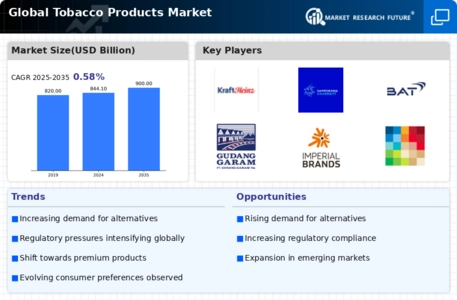

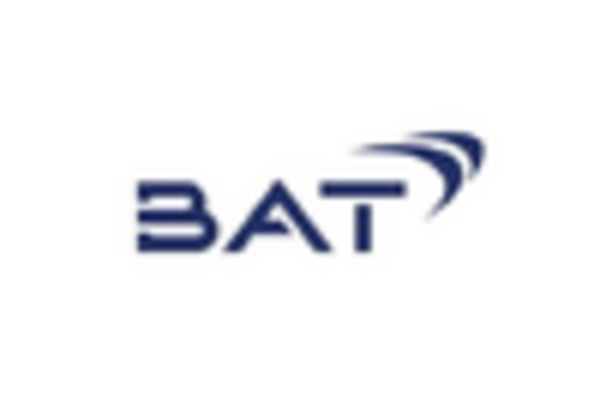

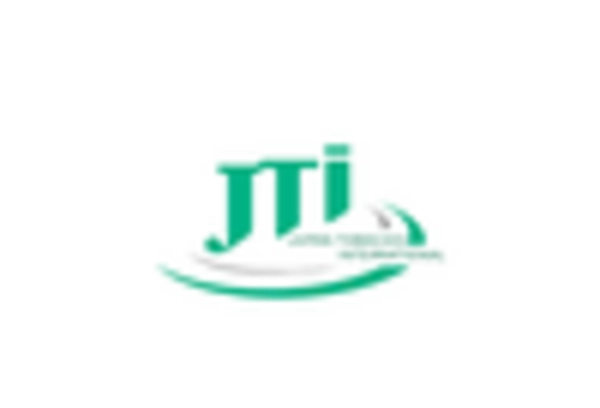
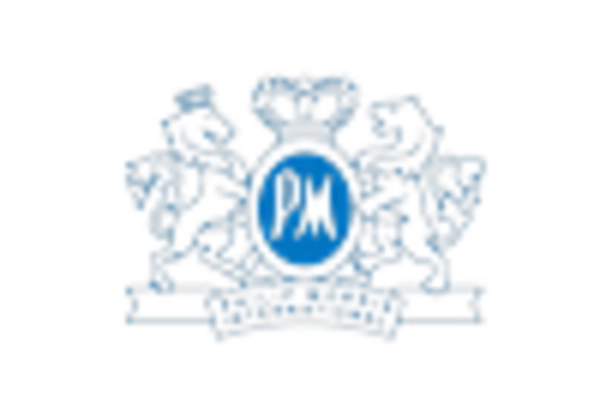
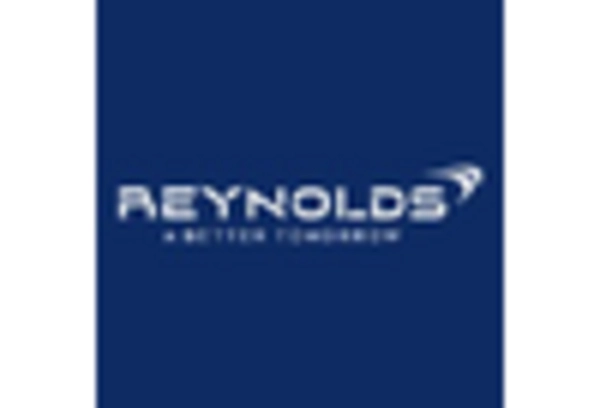









Leave a Comment